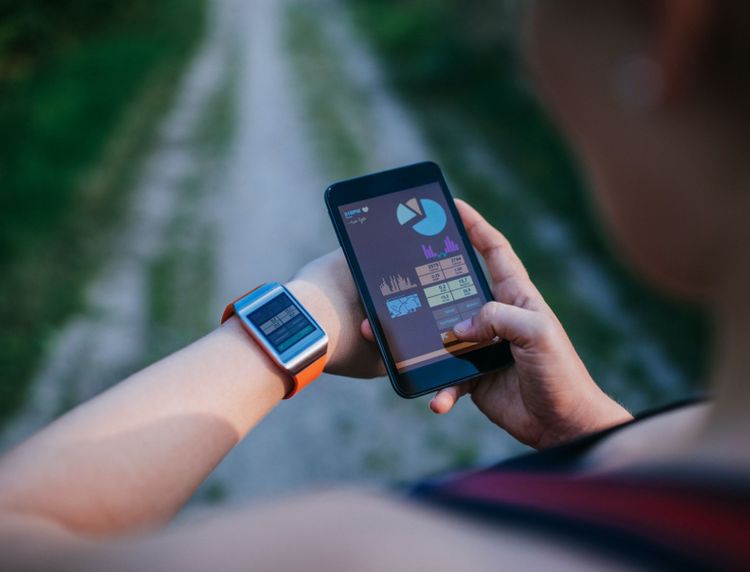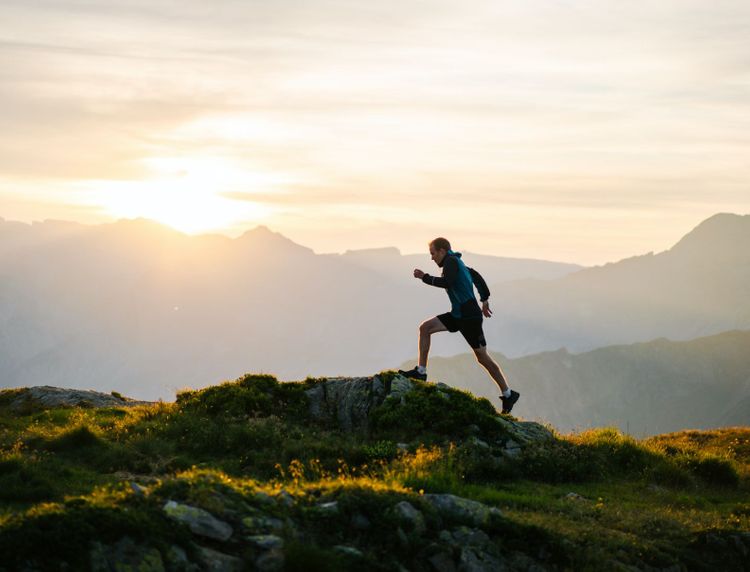Health Benefits of Anjaneyasana (Low Lunge Pose)
Anjaneyasana is a Sanskrit word that means "son of Anjani" or "son of the wind". It refers to the Hindu deity Hanuman, known for his strength, courage, and devotion.
Anjaneyasana is a pose that mimics Hanuman's leap across the ocean to rescue his beloved Sita from the demon king Ravana. The Anjaneyasana pose, also called the Low Lunge yoga pose, involves lowering one knee to the ground and lunging forward with the other leg.
It is a common pose in many yoga sequences, such as Sun Salutations, and it can be modified or mixed with other poses to suit different levels and needs.
Let’s discuss the Anjaneyasana benefits and how to perform them.
Share this article
List of Content
- Benefits of Anjaneyasana Pose
- Steps and Variations of Anjaneyasana
- Variations and Modifications of Anjaneyasana
- Conclusion
- FAQS
Benefits of Anjaneyasana Pose
Low lunge pose benefits your body in many ways.
Good for Thyroid Gland
When you practise low lunge Anjaneyasana, you stretch the neck muscles and create space for the thyroid glands to function properly. This can boost your metabolic rate, reduce calories, and maintain a healthy weight. It can also help you balance your hormones and prevent or manage conditions such as hypothyroidism or hyperthyroidism.
You can practice Anjaneyasana with some modifications and precautions if you have thyroid issues. For example, you can use a cushion or a folded blanket under your back knee to protect your joints and avoid overstretching. You can also keep your chin slightly tucked in and avoid tilting your head too far back to prevent compressing your throat.
Benefits your Heart and Lungs
When you practice Anjaneyasana steps, you lift your arms and arch your back, creating a gentle backbend that stretches the front of the body. This can help you improve your breathing capacity, raise your oxygen intake, and improve your blood circulation. It can also help you lower your blood pressure, reduce the risk of heart disease, and strengthen your immune system.
If you have heart or lung conditions, you can keep your hands on your hips or the front knee instead of raising them overhead to avoid straining your shoulders and chest. You can also keep your back slightly straight and avoid arching it too much to prevent compressing your spine. You can also breathe deeply and slowly and avoid holding your breath in Anjaneyasana.
Benefits of the Lower Body
Anjaneyasana stretches and strengthens the lower body, especially the hips, thighs, hamstrings, groins, and quadriceps. When performing this step, you drop your back knee to the base and transfer your weight forward, creating a deep lunge that opens the hips and lengthens the legs. This can help you enhance the flexibility and range of motion of the lower body and prevent lower back pain and stiffness. It can also help you tone and sculpt your muscles and improve your performance in sports and other activities.
If you have injuries, use a cushion or a folded blanket under your back knee to protect your joints and avoid overstretching. You can also adjust the distance between your feet and knees to find a comfortable and stable position.
Benefits your Core and Back
When you perform Anjaneyasana, you balance your body on one leg and lengthen your spine, creating a strong and stable core and back. This can help you improve your posture and alignment of the spine and relieve tension and stress in the back. It can also help support and protect your spine and prevent or heal back injuries and problems.
You can use a wall or a chair for support and balance if you feel unstable or wobbly. You can also use a strap or a belt around your front foot and hold it with your hands to create more space and ease in your back. You can also keep your back slightly straight and avoid arching it too much to prevent compressing your spine.
Improves Spirit and Energy
This pose can help you uplift your spirit and energy and feel more inspired and grounded. It can also help you activate the root, solar plexus chakras, and sacral, which are the energy centres that govern emotions and desires.
You can practice Anjaneyasana with some modifications and precautions, using a mantra or an affirmation to enhance your intention and motivation in your pose. You can also use a crystal or a stone to amplify your energy and vibration in your pose.
Steps and Variations of Anjaneyasana
Now that you know the benefits of Anjaneyasana, you might be wondering how to do it correctly and safely. Here is a detailed step-by-step guide on how to perform Anjaneyasana:
Begin by standing upright at the top of your mat. Inhale deeply and lift your arms overhead.
When you breathe out, gently bend ahead from your hips, advancing your hands towards the floor. If needed, bend your knees to make contact with the ground.
As you inhale, back your right foot and lower your right knee to the ground. Make sure your left knee aligns directly above your left ankle and that your left thigh is parallel to the floor.
As you exhale, slide your right leg back until you feel a comfortable stretch in your right hip and thigh. Keep your right toes tucked under and press your right heel back.
As you breathe in, lift your upper body and raise your arms up overhead. Keep your shoulders relaxed and your palms facing each other. Gently arch your back and gaze up at your thumbs.
As you exhale, sink your hips lower and draw your tailbone down. Engage your core and lengthen your spine. Keep your chest open and your breath smooth.
Continue this position for 3 to 5 breaths or as long as you feel comfortable.
To release, bring your hands to the floor and step your right foot forward. Repeat the same steps on the other side.
Variations and Modifications of Anjaneyasana
You can also try variations and modifications of Anjaneyasana to suit your level and needs. Here are some suggestions:
If you want to deepen the stretch in your hips and groins, lower your forearms to the floor or a block. This is called Anjaneyasana with Forearm Support.
If you want to challenge your balance and stability, lift your back knee off the ground and straighten your back leg. This is called High Lunge Pose or Ashwa Sanchalanasana.
If you want to twist your pose, you can bring your hands to your heart and rotate your torso to the left. Bring your right elbow to the outside of your left knee and press your palms together. This is called Anjaneyasana with a Twist or Parivrtta Anjaneyasana.
If you want to add a backbend to your pose, you can bend your back knee and reach your left hand back to grab your right foot. Gently pull your foot towards your buttocks and lift your chest. This is called Anjaneyasana with a Backbend or Eka Pada Rajakapotasana II.
Preparatory and Follow-up Poses of Anjaneyasana
Anjaneyasana is a pose you can practise as part of a yoga sequence or as a standalone pose. However, it is always a good idea to warm up and cool down before and after practising Anjaneyasana.
Some preparatory poses for Anjaneyasana are:
Mountain Pose or Tadasana
Downward Facing Dog or Adho Mukha Svanasana
Warrior I or Virabhadrasana I
Warrior II or Virabhadrasana II
Pyramid Pose or Parsvottanasana
Some follow-up poses after Anjaneyasana is:
Half Split or Ardha Hanumanasana
Pigeon Pose or Eka Pada Rajakapotasana
Child’s Pose or Balasana
Reclining Bound Angle Pose or Supta Baddha Konasana
Corpse Pose or Savasana
Conclusion
Anjaneyasana is a powerful and versatile yoga pose that can benefit your body, mind, and spirit in many ways. It can help you stretch and strengthen your muscles, joints, and organs, improve your breathing and blood circulation, enhance your balance and stability, increase your flexibility and focus, and uplift your spirit and energy.
Whether a beginner or an advanced yogi, you can practice Anjaneyasana with modifications and variations to suit your level and needs. You can also practice this pose with some preparatory and follow-up poses to warm up and cool down your body and mind.
Anjaneyasana offers numerous perks. However, it cannot eliminate the need for health insurance plans. When you buy health insurance online, insurers cover costs such as pharmacy bills, OPD charges, daycare procedures, AYUSH treatment, etc.
To choose the best medical insurance, compare health insurance plans before purchase.
FAQS
What is Anjaneyasana and its benefits?
Anjaneyasana benefits the body, mind, and spirit by stretching and strengthening the muscles, joints, and organs, improving breathing and blood circulation, enhancing balance and stability, increasing flexibility and focus, and uplifting the spirit and energy.
What muscles are stretched in Anjaneyasana?
Anjaneyasana stretches the hip flexors, quadriceps, and groin muscles of the back leg and the hamstrings and calves of the front leg. It also stretches the chest, shoulders, arms, and neck muscles by lifting the arms and arching the back.
How to do Anjaneyasana step by step?
To do this pose, follow these steps:
Begin with a low lunge with your right foot ahead and your left knee on the mat.
Raise your torso and your arms overhead, palms facing each other.
Draw your tailbone down and engage your core.
Gently arch your back and gaze up at your hands.
Hold for a few breaths, and then switch sides.
Share this article
Latest from our blogs

15 terms you must know before buying health insurance
We have listed all 15 terms a health insurance buyer should ...
Read More
How Much Health Insurance Do You Need?
While more and more people are getting insurance for things ...
Read More
4 simple steps to claim MediClaim in India
Check that all the documents contain required information li...
Read More